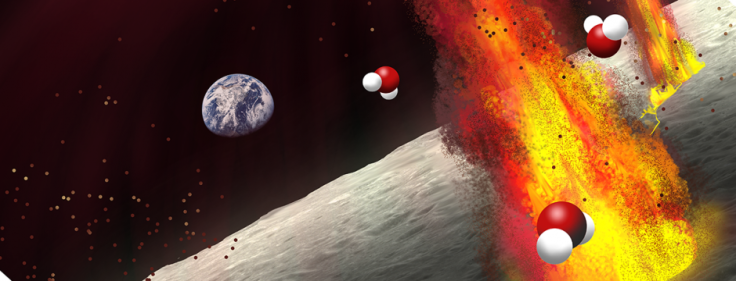Is the moon rich in water? Scientists say the lunar interior is wetter than we thought
Scientists say they detected widespread water within ancient explosive volcanic deposits on the moon.

The moon may contain a lot more water than previously thought. Scientists say they detected evidence of the lunar interior containing substantial amounts of water. While analysing satellite data, scientists uncovered that ancient volcanic deposits contained huge quantities of water trapped within them, suggesting that the moon is actually water-rich.
Scientists from Brown University said the new evidence suggests that parts of the moon's mantle may also contain large amounts of water.
Researchers found evidence of water while analysing pyroclastic deposits, which are rock deposits of volcanic origin. Water was also found in deposits near the Apollo 11 and Apollo 17 landing sites. Astronauts from the Apollo missions had brought back geological samples. In 2008, researchers found that the samples contained traces of water trapped in tiny glass beads.
"The distribution of these water-rich deposits is the key thing," said Ralph Milliken, the study's lead author and an associate professor in Brown's Department of Earth, Environmental and Planetary Sciences.
"They're spread across the surface, which tells us that the water found in the Apollo samples isn't a one-off. Lunar pyroclastics seem to be universally water-rich, which suggests the same may be true of the mantle."
Milliken told Space.com that the evidence suggests that the water was delivered to the moon in the early stages of its formation, likely before it solidified.

"The growing evidence for water inside the moon suggests that water did somehow survive, or that it was brought in shortly after the impact by asteroids or comets before the moon had completely solidified," said Shuai Li, a postdoctoral researcher at the University of Hawaii and a recent Brown Ph D graduate. "The exact origin of water in the lunar interior is still a big question."
"It is generally thought that the giant impact event that formed the moon was too energetic and hot for water to remain, yet there it is," Milliken said. "One option is that the water was delivered after the giant impact event, but before the moon had completely cooled, likely due to impacts by water-bearing comets and asteroids."
In addition to raising further questions about the formation of the moon, the presence of substantial amounts of water on the moon opens the door for long-term lunar colonisation. Although the lunar beads don't contain a lot of water, researchers said that given how widespread the deposits are, water could potentially be extracted in the future.
"These deposits may be much easier to access than potential water ice in shadowed regions at the lunar poles," Milliken said. "Water is heavy and expensive to take from Earth to space, so any bit of water that you can get on the moon instead of bringing with you from Earth is a big deal and opens up possibilities for sustained human presence on the moon."
The research, funded by the Nasa Lunar Advanced Science and Exploration Research Programme, has been published in Nature Geoscience.
© Copyright IBTimes 2025. All rights reserved.






















